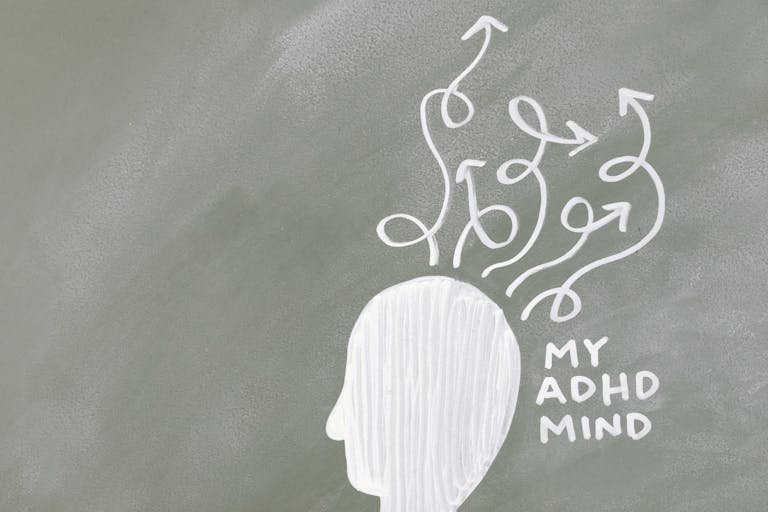Autism and ADHD: New UC Davis Study Reveals How Early Autism Diagnosis Predicts Later ADHD Types
A new study from UC Davis Health is shedding light on one of the most important questions in child neurodevelopment: how often do autism and ADHD occur together, and what can early signs tell us about a child’s future challenges?
The research, published in European Child & Adolescent Psychiatry, followed hundreds of children from early childhood through adolescence to understand how early autism or developmental delay might predict different types of ADHD later in life. The findings give clinicians and parents a clearer view of how these conditions overlap—and why accurate diagnosis matters so much.
The Background: Why This Matters
Autism Spectrum Disorder (ASD) and Attention-Deficit/Hyperactivity Disorder (ADHD) are two of the most common neurodevelopmental conditions in children. Both can affect attention, impulse control, and social interaction, often in overlapping ways.
Until recently, doctors weren’t allowed to diagnose both conditions in the same child. That changed in 2013, when the fifth edition of the Diagnostic and Statistical Manual of Mental Disorders (DSM-5) officially recognized that a person could be diagnosed with both autism and ADHD.
Since then, research has accelerated—and the UC Davis MIND Institute has been one of the leading centers studying this dual diagnosis.
How the Study Was Conducted
The new research built on two major long-term projects led by UC Davis Health:
- CHARGE (Childhood Autism Risks from Genetics and the Environment)
- ReCHARGE, a follow-up study tracking many of the same participants into adolescence
These studies aim to understand how genetics, environmental factors, and early development influence brain health.
For this specific investigation, researchers analyzed data from 645 participants, all originally enrolled in CHARGE. Through parental interviews, behavioral assessments, and clinical observations, they determined which children met the criteria for ADHD and what type of ADHD symptoms they showed.
Out of those 645 children, 213 were diagnosed with ADHD during follow-up assessments.
The Three Types of ADHD Explained
Before diving into the results, it’s useful to understand how ADHD is categorized. The study used the standard three presentations of ADHD:
- Inattentive Type – characterized by difficulty sustaining attention, organizing tasks, or following instructions. Children may seem easily distracted or forgetful.
- Hyperactive/Impulsive Type – involves fidgeting, restlessness, impulsive decision-making, and difficulty staying seated.
- Combined Type – includes symptoms from both inattentive and hyperactive/impulsive categories.
Understanding which type a child has can guide treatment choices—for instance, stimulant medication, behavioral therapy, or classroom accommodations.
What the Study Found
The study uncovered strong links between early autism and later ADHD, particularly the combined and hyperactive/impulsive types.
Here’s what the data showed:
- Children with autism were over five times more likely to develop combined or hyperactive/impulsive ADHD later on (Relative Risk ≈ 5.35).
- Those with other developmental delays—but not autism—were also at higher risk (RR ≈ 4.43) for these ADHD types.
- For inattentive ADHD, autism was again a major predictor, doubling the risk (RR ≈ 2.56).
- Developmental delay without autism, however, didn’t show a significant increase in risk for inattentive ADHD.
This means that an early autism diagnosis isn’t just important for managing social and communication challenges—it may also signal a higher likelihood of later attention and hyperactivity issues.
The Role of Age, Gender, and Family History
The researchers also explored how other factors might influence ADHD risk:
- Age: The likelihood of hyperactive/impulsive ADHD decreased slightly as children got older—around 7% lower per year.
- Gender: Boys were more likely to have the combined or hyperactive subtype, while girls showed more stable patterns of inattentive ADHD across ages.
- Parental ADHD history: If a parent had ADHD, their child was about twice as likely to develop the combined subtype.
- Maternal metabolic conditions, such as gestational diabetes, showed a mild trend toward higher ADHD risk, though this wasn’t statistically strong.
Socioeconomic factors—like race, parental education, or insurance coverage—didn’t significantly affect ADHD risk after accounting for other variables.
What It Means for Diagnosis and Care
This research highlights a key takeaway: autism and ADHD often coexist, and understanding that overlap can lead to better care.
In clinical practice, children with autism who show irritability, restlessness, or difficulty focusing might be misdiagnosed or treated for the wrong issue. For example, a child could be prescribed antipsychotic medication for irritability—when in fact their symptoms stem from ADHD, which responds better to different treatments.
Recognizing ADHD in children with autism helps doctors and parents fine-tune treatment plans, support attention and learning, and avoid unnecessary medications with serious side effects.
The authors of the study emphasized that early identification and ongoing monitoring are crucial. Addressing ADHD symptoms early can make autism therapies—like those focused on social skills or language—much more effective because the child can better focus and engage.
A Broader Look: Why Autism and ADHD Overlap
Scientists are still exploring why autism and ADHD overlap so frequently. Some studies suggest shared genetic factors and similar brain network differences, particularly in regions related to attention, reward, and executive function.
Both conditions can affect the prefrontal cortex, a part of the brain involved in decision-making, planning, and self-regulation. Disruptions in these areas might explain why kids with autism often have trouble focusing or managing impulses.
A 2020 review found that 30–70% of autistic individuals also meet criteria for ADHD, while around 20–40% of people with ADHD have autistic traits.
Understanding the shared biology could eventually lead to personalized treatments—for example, using genetic or neuroimaging data to guide medication choices or therapy types.
Moving Forward: What Parents and Clinicians Should Know
For parents, this study is a reminder to stay observant as a child grows. A diagnosis made at age three or four doesn’t capture everything about how that child will develop.
As the UC Davis researchers show, symptoms evolve. Some children initially thought to have autism may later show clearer ADHD patterns instead—or vice versa.
That’s why experts recommend re-evaluating developmental conditions periodically, especially during key transitions like starting school or adolescence.
Clinicians also benefit from understanding these comorbidities. It encourages collaboration between autism specialists, psychiatrists, and educators to create comprehensive care plans.
The Takeaway
This large, data-rich study from UC Davis adds solid evidence that autism and ADHD are deeply interconnected. Children diagnosed with autism in early childhood are significantly more likely to develop ADHD—particularly the combined or hyperactive-impulsive types—later on.
By identifying these risks early, parents and doctors can better tailor interventions, support a child’s strengths, and improve long-term outcomes in school, relationships, and mental health.
Research Reference:
Predicting later ADHD presentation types from early childhood autism and intellectual disability – European Child & Adolescent Psychiatry (2025)






